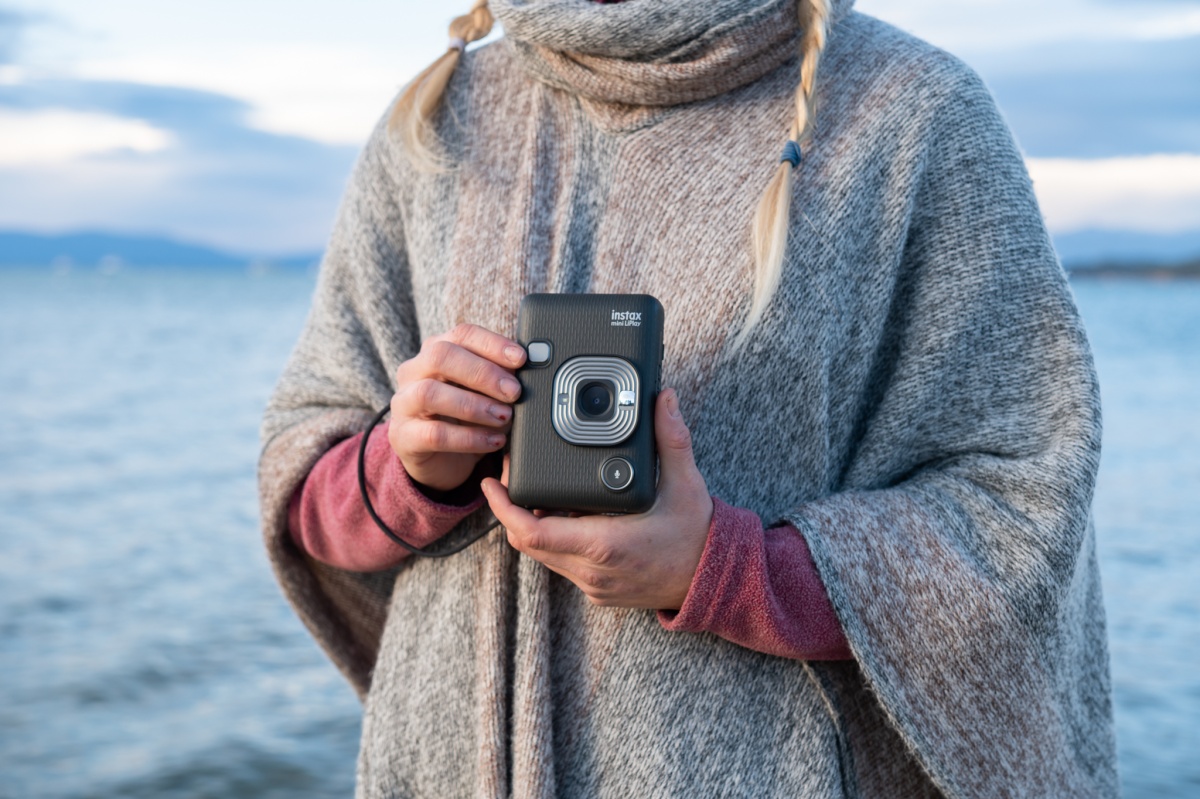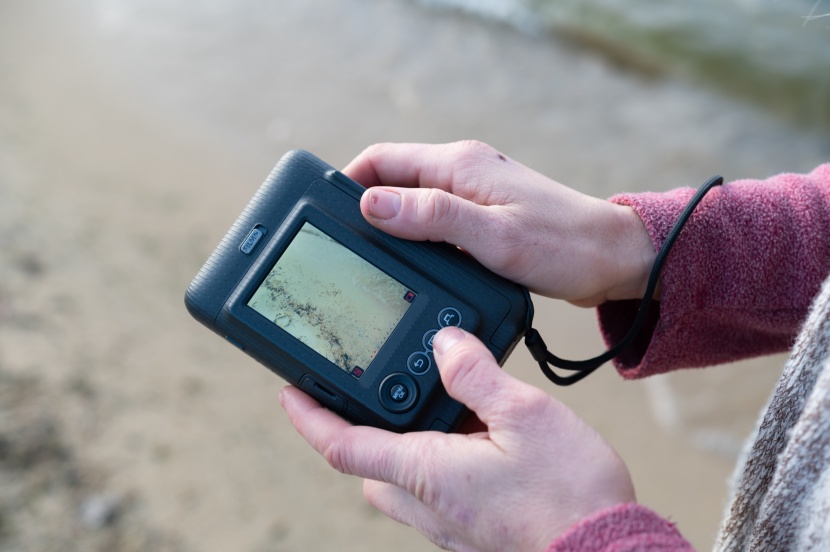
Our Verdict
Our Analysis and Test Results
With its numerous creative features, beautiful image quality, and compact design, the Fujifilm Instax Mini LiPlay is the perfect companion for any adventure. It can be adjusted to different lighting conditions, and the Bluetooth connectivity expands the creative possibilities to new heights. By connecting to the app, this camera provides features not available from any other model, like adding QR codes containing audio clips to the prints, putting a photo inside a photo, and dozens of frames options. The printing system is also unique in that the image moves from the screen to the print like they're one and the same. The rechargeable battery's long life and the reasonably priced film also help make this camera more economical in the long run. With the same experience of the classics mixed with the convenience of the digital age, this is what an instant camera is supposed to be like in the 21st century.
Image Quality
The Instax Mini LiPlay provides the best features of older analog and newer digital cameras. The first and most important area in which this camera performed well was in the quality of its images. Even though the autofocus is often skewed toward the dark side, the amount of control it offers enabled us to get a usable shot in any situation, and the prints showed strong contrast and a clear distinction between warm and cool tones. There was some loss of clarity in bright direct sunlight and when using the black and white mode, but this can be adjusted for a better outcome.
In our image quality tests, the Mini LiPlay came in second to only the Lomography Lomo'Instant Wide. However, no other digital hybrid model came even close to the stunning images produced by these cameras, setting the LiPlay head and shoulders above other hybrid models.
User Friendliness
Again, coming in behind only one other camera, the Mini LiPlay scored very well on its user-friendliness. The slim rectangular shape makes this camera very easy to transport and comfortable to shoot with. While connecting this Fuji to the compatible app increases the complexity of its controls, the additional creative features add to the fun, and the basic in-camera settings don't take long to figure out.
One of the most enjoyable aspects of shooting with the LiPlay is the printing process, which is both innovative and unique to this camera. Once you select the photo to be printed, the image slides across the review screen and onto the print. Where some cameras had issues with jamming, the LiPlay's process is far more reliable and yields a higher quality keepsake than any of the similar-sized models.
Features
With more updated features and creative settings than any other model, it's no surprise that the Mini LiPlay crushed the competition in this category. While simple features like a self-timer, adjustable flash, and a self-portrait mirror are always nice to have, the extra creative controls, like ten in-camera filters, 30 frames, digital storage, and the option to edit older pics, make this Fuji stand out above the rest of the group.
The possibilities for personalization provided by the Mini LiPlay smartphone app enable each user to capture memories and experiences in new ways. The option to convert audio clips to a scannable QR code on the prints is fun and futuristic. Having the ability to view, print, and/or save a digital copy of each image is not only convenient but also allows for older pics to be edited and multiple copies of the same photo to be printed. Another unique and useful feature is the option to favorite your most used frames and assign them to the camera's shortcut buttons for easy access. This camera's numerous controls and features can keep an experienced photographer entertained or open the door for amateurs to build on their photography skills.
Battery
Out of all the cameras in our review that use rechargeable batteries, the Mini LiPlay lasted the longest, going all the way through the testing phase on a single charge. Also, like all of the rechargeable models, the LiPlay takes about two hours to fully charge by way of a micro-USB cable. However, the Mini LiPlay is the only camera, regardless of battery type, that allows the user to set the time period for when it will shut off from inactivity, an added feature we appreciated.
The Fujifilm website lists the printing capacity per charge for this camera as approximately 100 prints depending on conditions of use, which seems accurate. Even though we didn't quite reach that limit, we used this camera in a wide variety of temperatures, from cold outdoor settings to warmer days in direct sunlight and inside next to a heater, none of which seemed to affect the battery very much. Many of the digital hybrids lost their charge quicker than expected due to the technical nature of their settings, but the Mini LiPlay did not have this issue.
Value
Despite being one of the more expensive cameras that we tested, the Mini LiPlay offers unmatched creativity, making it worth the extra scratch. The design is superb: sleek, easily portable, and durable with its scratch-resistant body. The functionality is reliable with heaps of creative possibilities, and most importantly, it consistently produces beautiful, high-quality film prints. The cost of the film is about average (roughly $0.85 per print) and having a rechargeable battery means you never have to spend money on replacements. In a time when many electronics become obsolete too quickly, this camera is a sound investment that's built to last.
Conclusion
After getting comfortable with the controls, we had a blast playing around with all of the different features on the Fujifilm Instax Mini LiPlay. We loved to watch the images slide off the screen and into our hands as they printed and felt secure knowing that something we shot yesterday could still be made into a physical photo at any time. Its small size is convenient for travel and comfortable to shoot with when the moment presents itself, and the rich colors displayed in the images kept us returning to this camera. Although it's a bit pricey, it's no surprise that the Mini LiPlay took the cake as our top choice.
| Awards | Best Digital Instant Camera |
|---|---|
| Price | $160 List Check Price at Amazon |
Overall Score  |
|
| Star Rating | |
| Bottom Line | A hybrid that utilizes the best parts of digital and film, all in one convenient little package |
| Pros | Lots of creative options, convenient size, great image quality, can save photos and view before printing |
| Cons | Mild learning curve to ensure prints come out well in different lighting situations |
| Rating Categories | Fujifilm Instax Mini... |
| Image Quality (40%) | |
| User Friendliness (30%) | |
| Features (15%) | |
| Battery (15%) | |
| Specifications | Fujifilm Instax Mini... |
| Film Cost Per Photo (approx) | $0.50 |
| Film Capacity | 10 shots |
| Battery Capacity | Claimed: 40 prints per charge Tested: About 5 packs or 50 prints; camera lasted a surpisingly long time when it read as "out of battery" |
| Power Supply | Built-in rechargeable battery (Micro USB) |
| Dimensions (as per manufacturer) | 122 mm x 79 mm x 23 mm |
| Weight (as per manufacturer) | 16 oz |
| Picture Size (as per manufacturer) | 54mm x 86mm |
| Image Settings | In-camera filters (monochrome, vintage, aqua), an option for prints to be framed, photobooth option which prints 2 photos on the same sheet |
| Focus Distances | Fixed focus |
| Focal Length | 27 mm |
| Aperture | Max f/2.2 |
| Film or Digital | Digital |
| Film Development Time | Automatic digital print |










